South Carolina's 7th congressional district
The 7th congressional district of South Carolina is a congressional district for the United States House of Representatives in South Carolina, established in 2011 following apportionment of another seat to the state following the 2010 census. It includes all of Chesterfield, Dillon, Georgetown, Horry, Marlboro, Darlington, and Marion counties and parts of Florence county. The first US representative from this new district, Tom Rice, was elected in 2012 and took office on January 3, 2013.
| South Carolina's 7th congressional district | |||
|---|---|---|---|
.tif.png) South Carolina's 7th congressional district since January 3, 2013 | |||
| Representative |
| ||
| Median income | $42,159[1] | ||
| Ethnicity | |||
| Cook PVI | R+9[2] | ||
Election results from presidential races
| Year | Result |
|---|---|
| 2012 | Mitt Romney 54.5 - 44.4% |
| 2016 | Donald Trump 58 - 39.1% |
History
The 7th congressional district of South Carolina existed in the 19th century but it was eliminated in 1853 as a result of the 1850 Census. After the 1880 Census, Congress apportioned the state another seat, and the state legislature re-established the district.
By that time, the Reconstruction era had ended and the state legislature was controlled by Democrats, who wrested control by a mixture of violence and fraud. They defined the boundaries of the 7th district, which was called the "shoestring district" because of its long, narrow shape that included many black precincts. In 1892 and 1894 the majority-black voters of the district elected George W. Murray to Congress; he was the only African American to serve in Congress in those sessions and, following disfranchisement and demographic changes, the last elected from the state until Jim Clyburn in 1992.
In 1895, the Democrat-dominated state legislature passed a new constitution, disfranchising black voters by changes to voter registration and electoral rules that were applied against them in a discriminatory way. For decades after 1896, only white Democrats were elected to Congress from the state. (Such disfranchisement occurred among all the states of the former Confederacy, and their use of poll taxes, literacy tests, grandfather clauses, and white primaries survived several US Supreme Court challenges.)
During the first half of the 20th century, 6.5 million blacks in total left South Carolina and other southern states in the Great Migration to the North, Midwest and West. Following cumulative declines in state population, after the 1930 Census, South Carolina lost a seat and the 7th district was eliminated in redistricting. It was last represented by Democrat Hampton P. Fulmer, who was redistricted into the 2nd district.
South Carolina had only six districts for the next 80 years. African Americans were effectively barred from voting until after passage of the Voting Rights Act of 1965. Increases in population led to the state's receiving another congressional seat following the 2010 Census.
The 7th district is located in the rapidly developing area of northeastern South Carolina, including the Myrtle Beach metropolitan area (the Grand Strand) and the Pee Dee region.[3][4] It is a white-majority district and its voters elected Republican Tom Rice as US Representative from the district in 2012; he took office in January 2013, when the 113th Congress convened. Due almost entirely to the presence of heavily Republican Horry County, which has as many people as the rest of the district combined, it tilts Republican.
The district boundaries are roughly similar to the configuration of the 6th congressional district before it was reconfigured after the 1990 census as a black-majority district.
List of members representing the district
| Member | Party | Years | Cong ress |
Electoral history | District location | |||
|---|---|---|---|---|---|---|---|---|
| District created in 1803 | ||||||||
| Thomas Moore | Democratic-Republican | March 4, 1803 – March 3, 1813 |
8th 9th 10th 11th 12th |
Redistricted from the 6th district and re-elected in 1803. Re-elected in 1804. Re-elected in 1806. Re-elected in 1808. Re-elected in 1810. Retired. |
1803–1813 "Chester district" | |||
| Elias Earle | Democratic-Republican | March 4, 1813 – March 3, 1815 |
13th | Redistricted from the 8th district and re-elected in 1812. Lost re-election. |
1813–1823 "Pendleton district" | |||
| John Taylor | Democratic-Republican | March 4, 1815 – March 3, 1817 |
14th | Elected in 1814. Lost re-election. | ||||
| Elias Earle | Democratic-Republican | March 4, 1817 – March 3, 1821 |
15th 16th |
Elected in 1816. Re-elected in 1818. Retired. | ||||
| John Wilson | Democratic-Republican | March 4, 1821 – March 3, 1823 |
17th | Elected in 1820. Redistricted to the 6th district. | ||||
| Joseph Gist | Jackson Republican |
March 4, 1823 – March 3, 1825 |
18th 19th |
Redistricted from the 8th district and re-elected in 1823. Re-elected in 1824. Retired. |
1823–1833 "Chester district" | |||
| Jacksonian | March 4, 1825 – March 3, 1827 | |||||||
| William T. Nuckolls | Jacksonian | March 4, 1827 – March 3, 1833 |
20th 21st 22nd |
Elected in 1826. Re-elected in 1828. [data unknown/missing] | ||||
| William K. Clowney | Nullifier | March 4, 1833 – March 3, 1835 |
23rd | [data unknown/missing] | 1833–1843 [data unknown/missing] | |||
| James Rogers | Jacksonian | March 4, 1835 – March 3, 1837 |
24th | [data unknown/missing] | ||||
| William K. Clowney | Nullifier | March 4, 1837 – March 3, 1839 |
25th | [data unknown/missing] | ||||
| James Rogers | Democratic | March 4, 1839 – March 3, 1843 |
26th 27th |
[data unknown/missing] | ||||
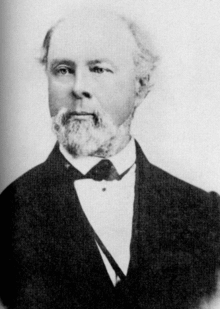 Robert B. Rhett |
Democratic | March 4, 1843 – March 3, 1849 |
28th 29th 30th |
Redistricted from the 2nd district. [data unknown/missing] | ||||
| William F. Colcock | Democratic | March 4, 1849 – March 3, 1853 |
31st 32nd |
[data unknown/missing] | ||||
| District eliminated in 1853 | ||||||||
| District re-established in 1883 | ||||||||
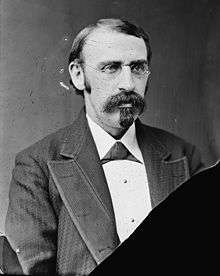 Edmund W.M. Mackey |
Republican | March 4, 1883 – January 27, 1884 |
48th | Redistricted from the 2nd district. Died. | ||||
| Vacant | January 27, 1884 – March 18, 1884 | |||||||
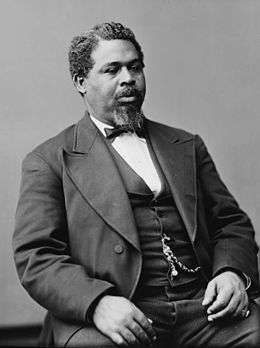 Robert Smalls |
Republican | March 18, 1884 – March 3, 1887 |
48th 49th |
[data unknown/missing] | ||||
.jpg) William Elliott |
Democratic | March 4, 1887 – September 23, 1890 |
50th 51st |
Elected in 1886. Re-elected in 1888. Lost election contest. | ||||
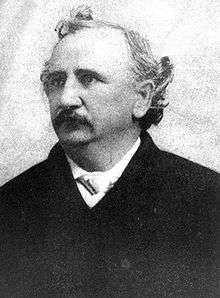 Thomas E. Miller |
Republican | September 24, 1890 – March 3, 1891 |
51st | Won election contest. Lost re-election. | ||||
.jpg) William Elliott |
Democratic | March 4, 1891 – March 3, 1893 |
52nd | Elected in 1890. Retired. | ||||
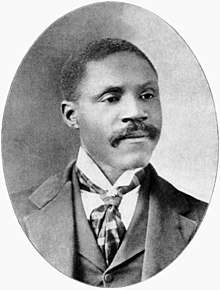 George W. Murray |
Republican | March 4, 1893 – March 3, 1895 |
53rd | Elected in 1892. Redistricted to the 1st district. | ||||
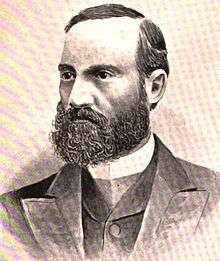 J. William Stokes |
Democratic | March 4, 1895 – June 1, 1896 |
54th | Elected in 1894. Seat declared vacant while being contested because of Democratic election fraud. | ||||
| Vacant | June 1, 1896 – November 3, 1896 | |||||||
 J. William Stokes |
Democratic | November 3, 1896 – July 6, 1901 |
54th 55th 56th 57th |
Elected to finish his own term. Also elected in 1896 to the next term. Re-elected in 1898. Re-elected in 1900. Died. | ||||
| Vacant | July 6, 1901 – November 5, 1901 | |||||||
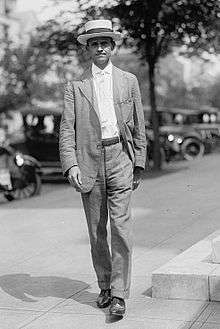 Asbury F. Lever |
Democratic | November 5, 1901 – August 1, 1919 |
57th 58th 59th 60th 61st 62nd 63rd 64th 65th 66th |
Elected to finish Stokes's term. Re-elected in 1902. Re-elected in 1904. Re-elected in 1906. Re-elected in 1908. Re-elected in 1910. Re-elected in 1912. Re-elected in 1914. Re-elected in 1916. Re-elected in 1918. Resigned to become member of Federal Farm Loan Board. | ||||
| Vacant | August 1, 1919 – October 7, 1919 |
66th | ||||||
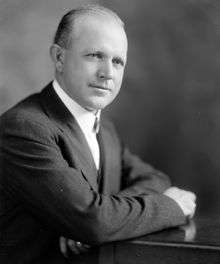 Edward C. Mann |
Democratic | October 7, 1919 – March 3, 1921 |
Elected to finish Lever's term. Lost renomination. | |||||
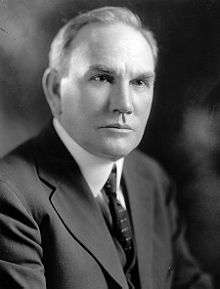 Hampton P. Fulmer |
Democratic | March 4, 1921 – March 3, 1933 |
67th 68th 69th 70th 71st 72nd |
Elected in 1920. Re-elected in 1922. Re-elected in 1924. Re-elected in 1926. Re-elected in 1928. Re-elected in 1930. Redistricted to the 2nd district. | ||||
| District eliminated in 1933 | ||||||||
| District re-established in 2013 | ||||||||
.jpg) Tom Rice |
Republican | January 3, 2013 – Present |
113th 114th 115th 116th |
Elected in 2012. Re-elected in 2014. Re-elected in 2016. Re-elected in 2018. |
2013–present:.tif.png) | |||
References
- https://www.census.gov/mycd/?st=45&cd=07
- "Partisan Voting Index – Districts of the 115th Congress" (PDF). The Cook Political Report. April 7, 2017. Retrieved April 7, 2017.
- "Census 2010 shows Red states gaining congressional districts". Washington Post. Retrieved 2010-12-21.
- Martis, Kenneth C. (1989). The Historical Atlas of Political Parties in the United States Congress. New York: Macmillan Publishing Company.
- Martis, Kenneth C. (1982). The Historical Atlas of United States Congressional Districts. New York: Macmillan Publishing Company.
- Congressional Biographical Directory of the United States 1774–present